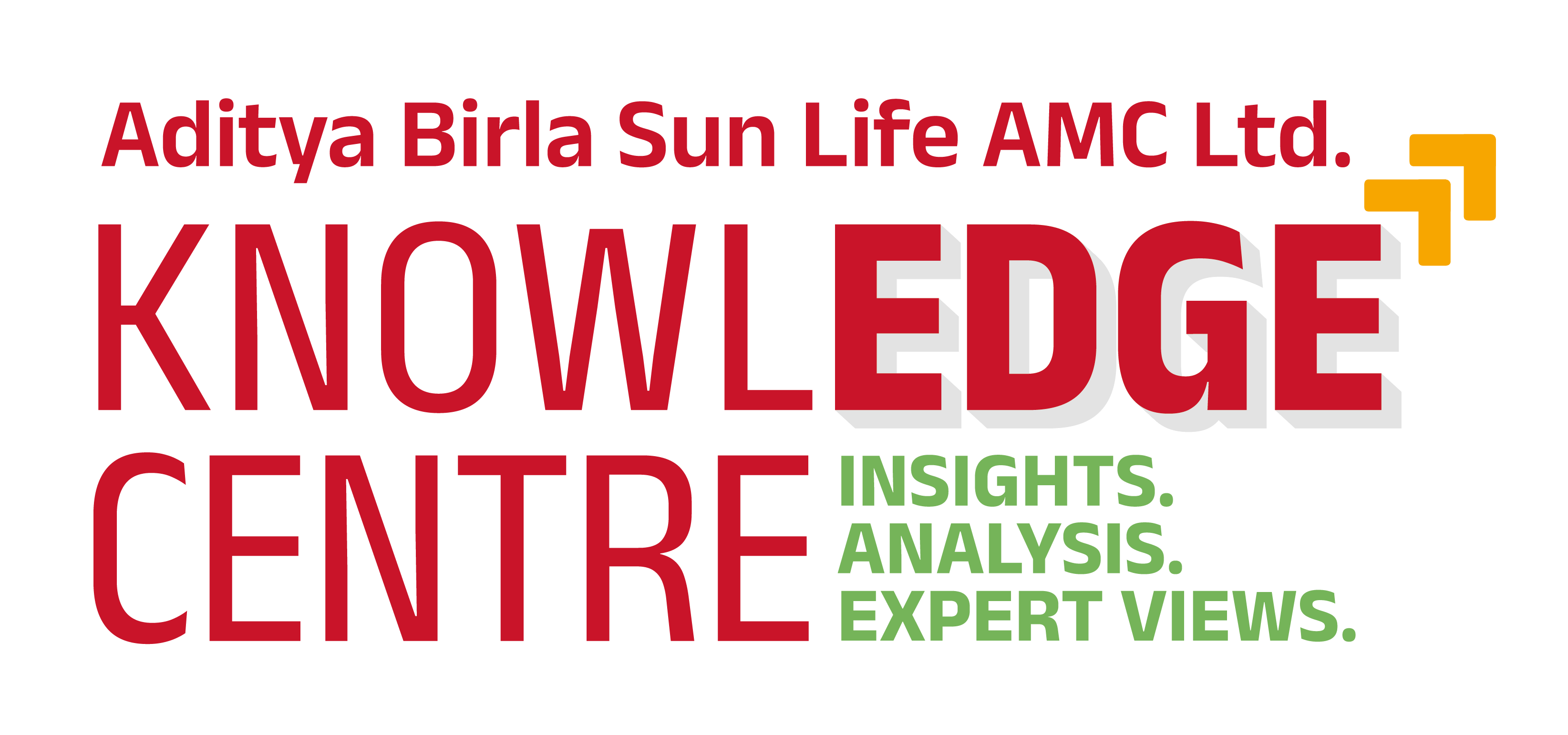-
Our Products
Our FundsFocus Funds
-
Self Care
Self-ServiceFind InformationWays To TransactPartner Solutions
-
Downloads
- Learnings
- About Us
-
More
-
Shareholders
-
Shareholders
-
Updates
-
-
SIP Calculators
- Back
-
Shareholders
Unleashing Potential: The Dynamics of AI in India

Mar 20, 2024
2 Mins Read
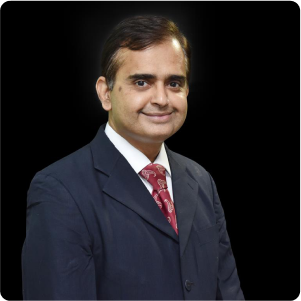 Vinod Bhat
Vinod Bhat
Listen to Article
After attending the Microsoft AI Tour last month, I attended a few conferences and met with some government officials over the past few weeks during my macro tour.
With Generative Artificial Intelligence (Gen AI) coming into the limelight, the focus of the enterprise is shifting to data, analytics and AI.
Source: Microsoft
Source: Microsoft 1. Setting up a Data Lake – Single version of truth (Data infrastructure and governance) based on structured and unstructured data 2. Application of AI – Descriptive, Prescriptive, Predictive capabilities based on single view of data 3. Intelligent Automation – Robotic Process Automation enabled by AI 4. Extended Reality – Presence, Simulation, Digital Twin 5. Copilots, GPTs, Plugins – Conversations, Generative capabilities, and Reasoning
However, technology transformations are not limited to enterprises alone.
During my field research, it was clear that whether it’s the Enterprise or the Government, there is an increasing focus on technology and AI. Here’s sharing some interesting insights into technology and AI-related trends in India.
I. Enterprise Digital Landscape
So, what are some of the interesting AI-driven use cases enterprises have started working on?
In the Banking & Financial Services sector, some of the top applications that companies have prioritized and are doing pilots on are customer call servicing, product recommendations, credit analysis, fraud detection, payments analysis, as well as financial analysis and advice.
So, instead of your bank Relationship Manager (RM) calling you by recommending some random financial products, don’t be surprised if they suddenly seem to know you much better and start recommending apt solutions to meet your needs. After all, there may be an intelligent assistant guiding the RM at every step.
Exhibit 1:
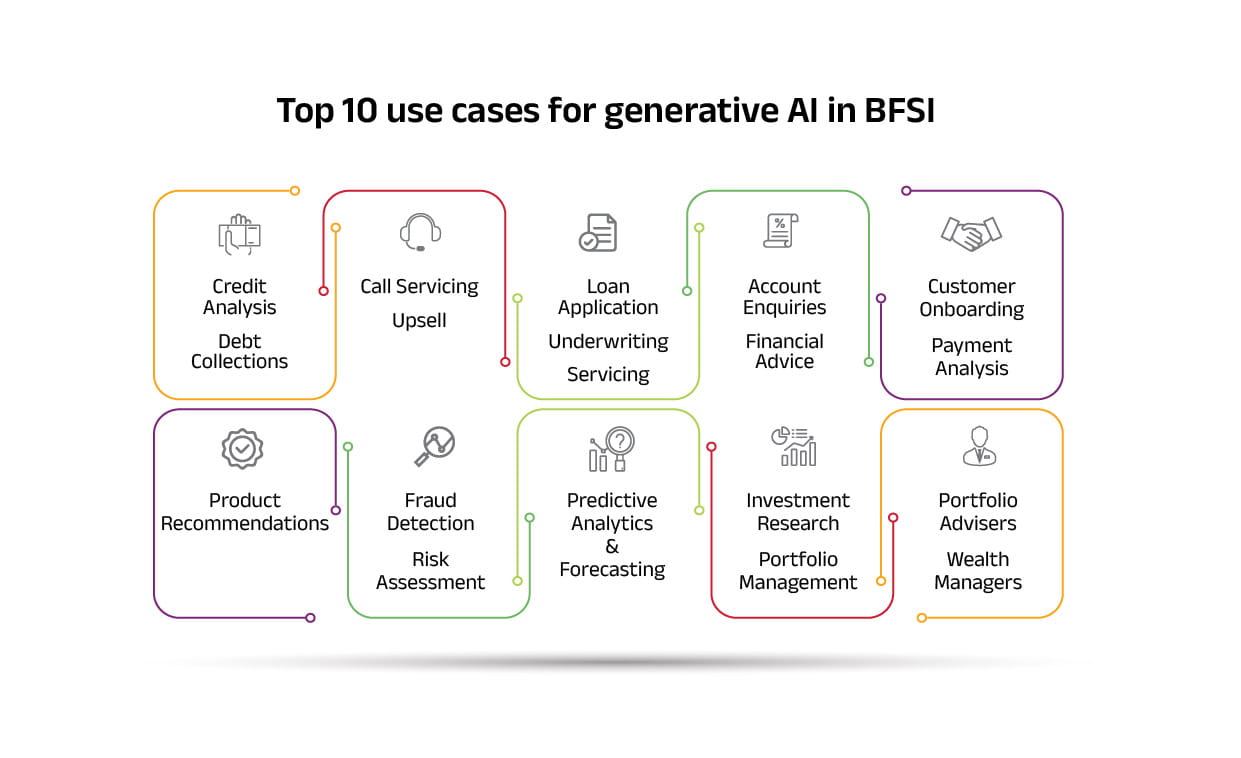
In general, generative AI is being used for various applications such as creative writing and content creation, language translation, personalized marketing, chatbots and virtual assistants, call centre operations, developing new products, and medical research.
In fact, if you are tired of calling a customer service number and interacting with an automated system, you may soon be able to speak to a human-sounding agent. It would still be an automated system, but it would be intelligent and act like a human, and you may not be able to tell the difference.
Exhibit 2:

Companies are going through four stages to set up digital infrastructure and stay ahead in the technology curve:
In addition, with Generative AI coming into the picture, today’s AI can see, hear, and speak. And although it cannot feel, it can prescribe. So, companies are doing pilots in the fifth stage below.
II. Digital Public Infrastructure
The India Stack being developed by the Government of India is enabling India to leapfrog decades of technology infrastructure development, similar to how cell phones and telecom networks helped us leapfrog the requirement of putting a landline network in place as was done in other countries.
Exhibit 3:
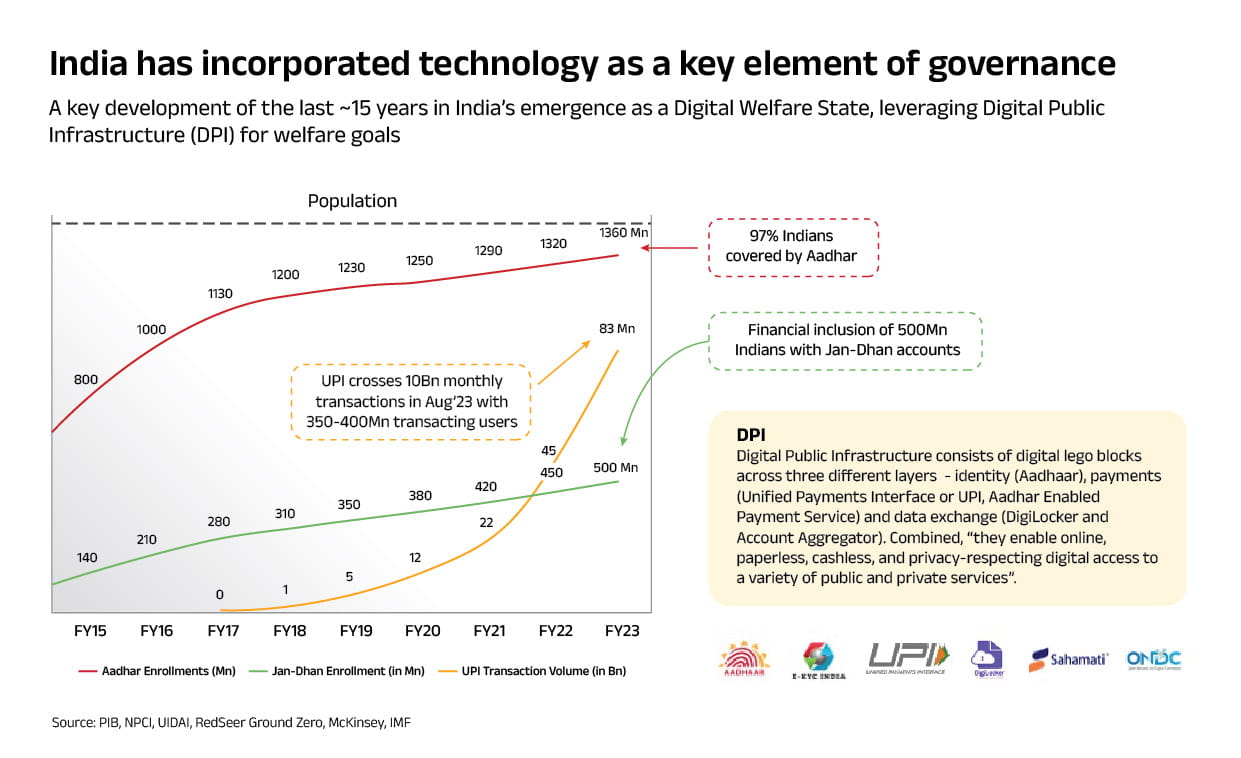
Aadhar and UPI have already transformed our lives. My Aadhar card is my default ID everywhere. And I rarely make any payments in cash anymore and don’t think twice about making even a Rs 10 payment by UPI. No wonder around 500 million people are estimated to be using UPI every month.
GST and Fastag are two other elements of Digital India. GST collections have already reached $20 bn per month with around 12% yoy growth which is in line with nominal GDP. This shows the impact of increasing formalization in the economy. In 2 years, 98% of vehicles in India are carrying Fastag which is saving both time and fuel at toll booths
A similar disruption is happening online where the Online Network for Digital Commerce (ONDC) aims to democratize the world of eCommerce. There are an estimated 12 million sellers of products and services in India, many from small towns and rural areas. However, only 15,000 of these sellers (i.e. 0.125%) have enabled e-commerce.
Exhibit 4:
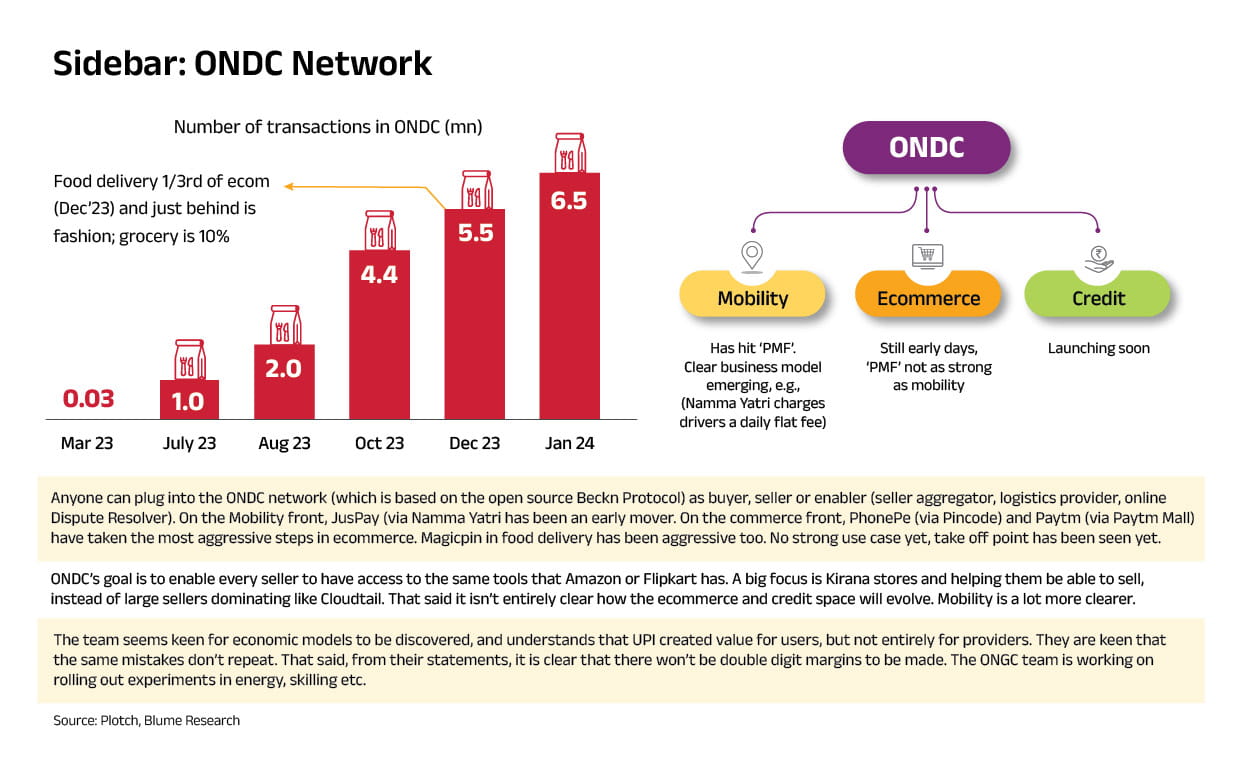
ONDC aims to take eCommerce to the smallest businesses by bringing all buyer networks and seller networks on a single platform along with enablers such as payments and logistics service providers. The aim is not for ONDC to become a monopoly itself but to ensure that there are no monopolies or duopolies as seen in other countries where just one or two large eCommerce firms take the lion’s share of the market, and small businesses have to survive on their terms.
Exhibit 5:
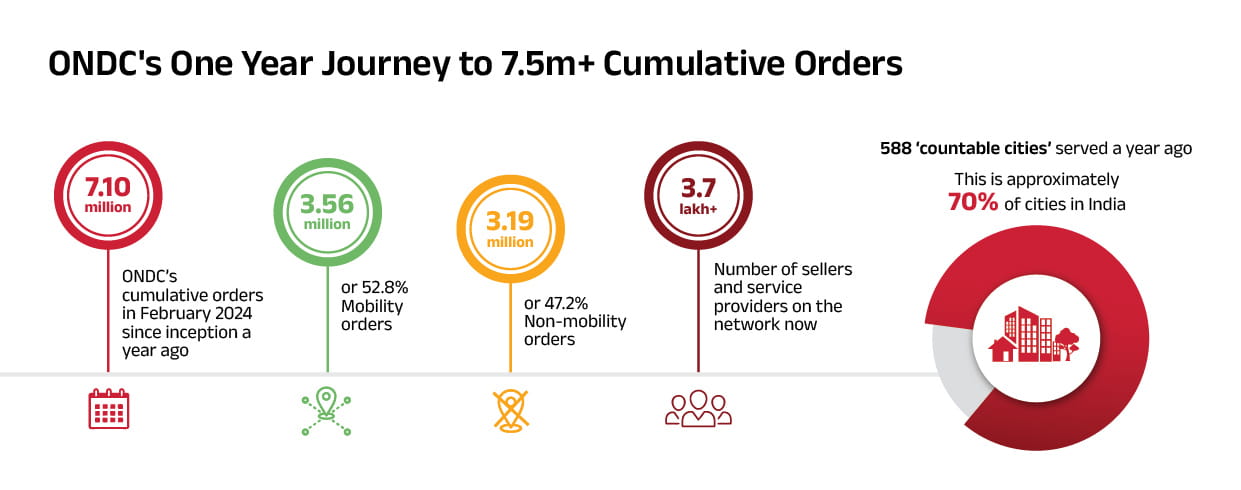
Source: ONDC, Economic Times
Countable cities: They are defined by the network as cities or districts with more than 100 orders per month in the last three months.
At our Annual event Voyage held recently, we also learnt that ONDC could also help to deliver small businesses to offer financial services such as micro credit, insurance and Mutual Fund distribution.
Lastly, the Digital India Foundation gave a glimpse of what’s happening in Bharat. As compared to the average 5-6 GB per month of data consumption in urban areas, the data consumption in rural areas is as high as 50-60 GB on average as everything from social media access, online gaming, watching cricket, films and other entertainment is happening on the mobile phone.
The government is also working on offering an AI stack to make shared infrastructure services available to domestic players so that they can build services on top. A large quantum of data is being tokenized as part of the Bhashini project which will also make it easier for everyone to access services in vernacular languages. The government is also focusing on collaboration with other countries for treaties regarding responsible and safe AI.
For Digital India, key targets are providing internet Connectivity to 600 mn villagers, reaching 1 bn transactions a day on UPI, creating a new stack every few months (e.g. ONDC for eCommerce, ABHA for Health, Digi Yatra for travel, platform for Agri services such as Agri Marketplace, AI stack etc.).
For next two years, focus will be on developing Digital Public Infrastructure. Govt will encourage Private investment in 3 areas:
a. AI/ML – Last week, the Union Cabinet approved an outlay of Rs 10,372 crore for five years for the India AI Mission. It is aimed at fostering innovation in AI through public-private partnerships.
b. Energy transition - batteries, storage, swapping, charging technology, Autonomous vehicles.
c. Semiconductors - make chips that are consumed in volume e.g. in washing machines etc.
III. The Artificial Intelligence Market in India – Some Estimates
India’s artificial intelligence market is projected to touch $17 billion by 2027, growing at an annualised rate of 25-35% between 2024 and 2027, as per a joint report studying AI-powered tech in the country by IT industry body Nasscom and consulting firm BCG.
Recent earnings calls from Indian IT majors also showcase the increasing focus of AI in their offerings.
“…Generative AI which is a disruptive technology that has potential to enhance efficiency and drive significant value, is generating tremendous interest among our clients. We are seeing strong interest levels and engagement from customers on Gen AI.” ~ TCS Q3 FY23-24 Earnings Call
“We have 100,000 employees trained in Generative AI areas. We have developed a range of use cases and benefit scenarios across different industries for our clients.” ~Infosys Q3 FY23-24 Earnings Call
India's flourishing economy, touted as the world's fastest growing, stands resilient amid global challenges. Expected to rank third largest by 2027, its journey towards $26 trillion could hinge on how it uses this transformative tech, that can boost productivity and efficiency, crucial for India's growth and goals.
Exhibit 6:
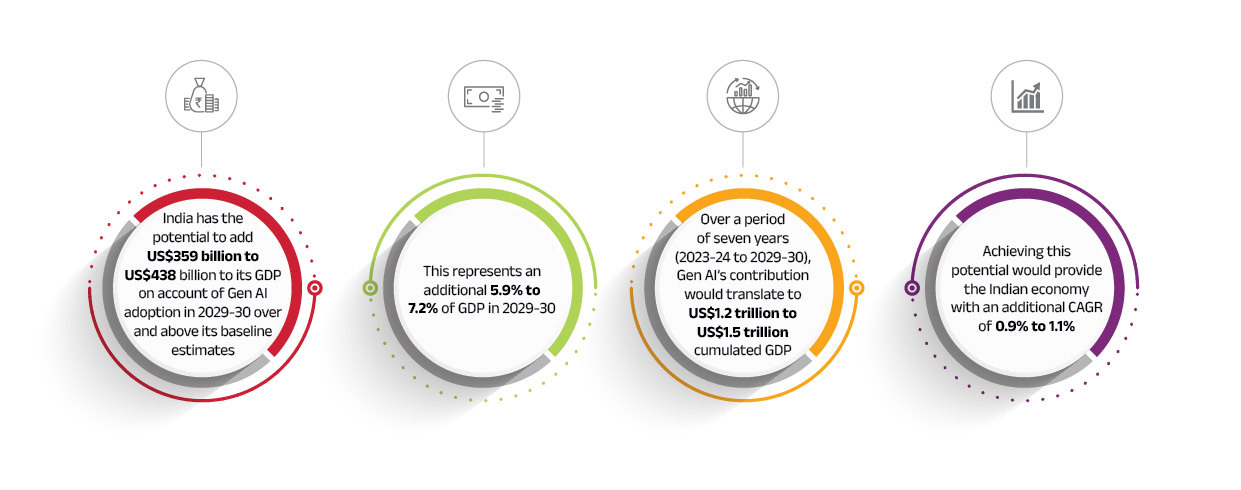
Source: EY
We will keep track on the developments in this space which is now all pervasive in terms of the gamut of industries harnessing the power of AI. It will be interesting to watch out the emerging trends in this space. We will bring you more insights on the same.
Source: Microsoft, ONDC, Digital India Foundation, Ministry of Finance, Ministry of Road Transport & Highways, Ministry of Electronics and Information Technology
The information herein is meant only for general reading purposes and the views being expressed only constitute opinions and therefore cannot be considered as guidelines, recommendations or as a professional guide for the readers. The document has been prepared on the basis of publicly available information, internally developed data and other sources believed to be reliable.
Mutual Fund investments are subject to market risks, read all scheme related documents carefully.
You May Also Like
Loading...





 1800-270-7000
1800-270-7000




